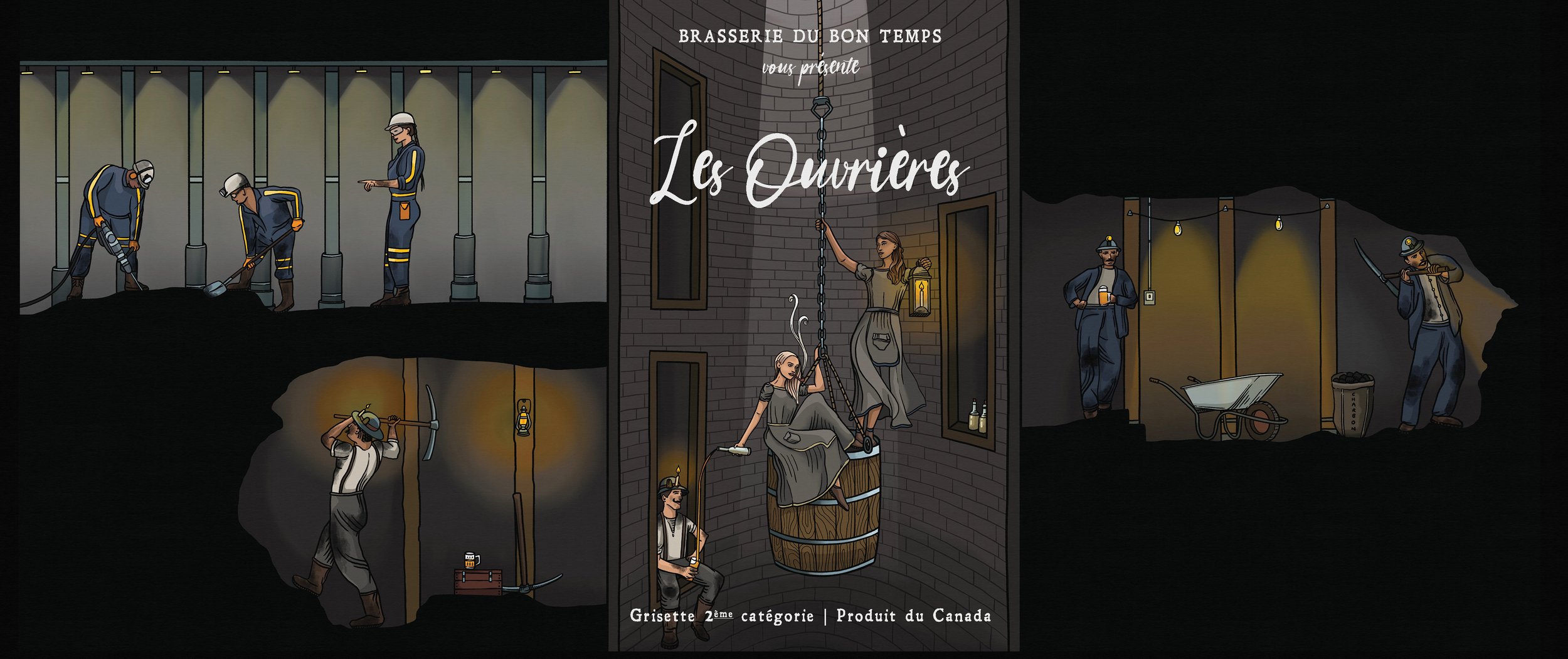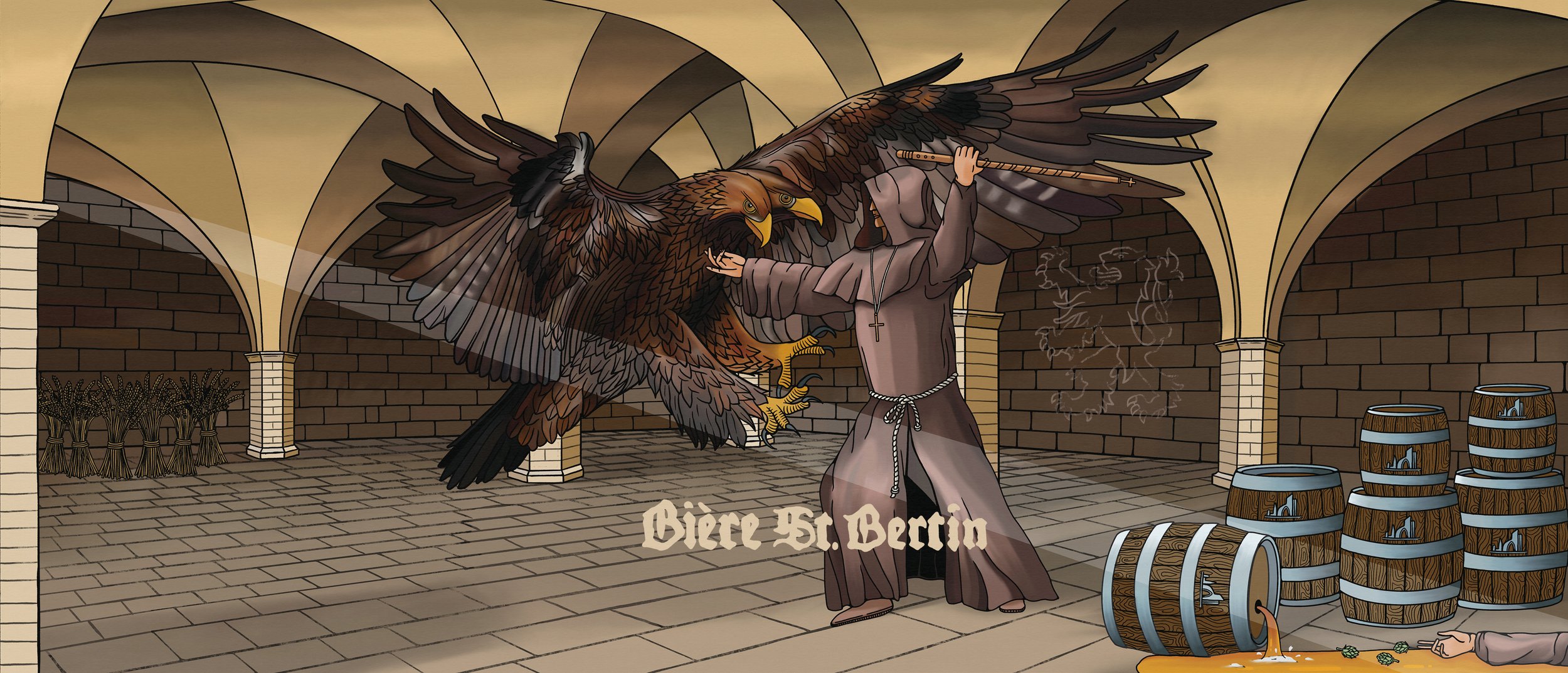Les Ouvrières
Les Ouvrières (the workers) is our version of Grisette, a light, aromatic Belgian ale that was popular among coal miners. It’s named after the women who served it.
Origin: Hainaut / Wallonia (Southern Belgium)
Period: Industrial Revolution / Romantic and Victorian eras (1760-1900)
Style: Grisette (2ème catégorie) 3.8% alc/vol.
The Story
An ambitious class of young woman was rising in Belgium and France during the Industrial Revolution. With little to no means, they left the countryside to seek a meaningful life in the city and challenged the belief that women ought not work outside the home. These were the Grisettes.
Grisette means little grey one. It’s what the miners they served in the pubs called them on account of their grey frocks. But when they weren’t working, Grisettes were vibrant participants in Bohemian culture. They were artists and dreamers, expanding their literacy, knowledge and social standing on the road to a fulfilling life.
Here's to the women who refused to accept the world they were handed, and to all those who risked scorn and peril to build the ladder future generations would climb.
Bière St. Bertin
Bière St. Bertin is the result of our research into the earliest hopped beers that emerged during the Middle Ages. It is a gruit (un-hopped beer with herbs) made in the style common in the 14th century with hops added as monks would have at the time, both for flavour and as a preservative.
Origin: Comté de Flandres (Contemporary Flanders, Belgium and Nord-Pas-du-Calais, France)
Period: Late Middle Ages / Early Renaissance (mid-1300s)
Style: Unclassified - A re-creation imagining one of the earliest hopped European beers. 5.2% alc/vol.
The Story
Weavers stepped back from their looms as the lifeblood of their villages began to flow toward the city. The year was 1332 and a young count, native to a different realm, had bought the support of Ypres by giving the city a monopoly on cloth, leaving the countryside impoverished.
But God does not forsake the faithful. And so He cast his light upon a centuries-old book of wisdom written by a curious nun, Hildegard von Bingen. It’s message to the monks of St. Bertin abbey was this: use the bitter flower of the rope-making vine (hops) to craft a new style of drink. Hop yards soon covered the countryside, growing toward heaven in praise of God. Soon the cloth merchants of Ypres were spending their money on draughts of hoppy beer from the countryside.
King Gambrinus - The Devil’s Tipple
King Gambrinus: The Devil’s Tipple is inspired by a journey Gambrinus, the mythical king of beer, made into hell. It is a recreation of a 16th century German adambier.
Origin: Dortmund, North Rhine-Westphalia, Holy Roman Empire
Period: Early Modern and The Renaissance (circa 1500)
Style: Adambier (10% alc/vol.)
The Story
A man of intimidating stature with the confidence of a God, Gambrinus happily accepted Lucifer’s wager. How could a footrace with men be a challenge to someone like him? The Devil’s in the details, as it were, and Gambrinus would have to contest the race while carrying a barrel of beer. Our hero quickly devised a solution to this ridiculous demand; he drank the barrel dry. The lighter load was no burden and he won the race handily.
Such stories make up the legend of Gambrinus, the mythical king of beer. An amalgam of historical persons combined with the bravado of late-night discussions in 16th Century taverns, he was a well-known folk legend until the late 19th Century. Half buried in the sands of time, we are paying homage to the King by resurrecting a strong ale popular in Germany 500 years ago. This Adambier is best as a dessert beer, with notes of dark fruit, chocolate, liquorice and mild smoke that would make Gambriuns proud. He may have even discovered the style while paying Satan a visit in hell (and discovering coal in the process).
Wild Pattersbier
Wild Pattersbier is a recreation of a medieval monastic beer made by monks.
Origin: Central and Northern Europe
Period: Mid-late medieval period (800-1400)
Style: Pattersbier
The Story
Belgian monks are known for brewing strong ales, which have for centuries been sold to finance their monasteries. The style Pattersbier (literally father's beer) is less well known. It's what the monks brewed for their own daily consumption. Monks consumed between two and ten pints of pattersbier per day depending on how hard their work was, so it is low alcohol by necessity.
This Pattersbier is brewed using traditional Belgian ingredients and techniques. It was fermented with wild yeast. Our pattersbier uses a strain of wild yeast isolated from an apple in a Canadian orchard.
3.0% alc/vol




